…
|
|
||||
|
Thanks to the Streisand Effect of his suspension for a 16 minute speech, tens of thousands of people wrote to him to agree. But despite being such a drawcard HSBC didn’t appreciate his new popularity, and he has now resigned under duress. His letter says all the right things below. He’s a man to follow… h/t Tallbloke Stuart has now resigned his post, and issued this statement: Today I wish to announce that I have resigned as global head of responsible investing at HSBC Asset Management. Ironically given my job title, I have concluded that the bank’s behaviour towards me since my speech at a Financial Times conference in May has made my position, well, unsustainable. Funny old world. Over a 27-year unblemished record in finance, journalism and consulting I have only ever tried to do the best for my clients and readers, knowing that doing so helps my employer too. Investing is hard. So is saving our planet. Opinions on both differ. But humanity’s best chance of success is open and honest debate. If companies believe in diversity and speaking up, they need to walk the talk. A cancel culture destroys wealth and progress. There is no place for virtue signalling in finance. Likewise as a writer, researcher and investor, I know that words or trading shares can only achieve so much. True impact comes from the combination of real-world action and innovative solutions. Which is why I’ve been gathering a crack group of like-minded individuals together to deliver what is arguably the greatest sustainable investment idea ever conceived. A whole new asset class. Sounds fanciful – but I am not one for hyperbole, as viewers of my presentation know well. To be announced later this year, the first project will underline the central argument in my speech: that human ingenuity can and will overcome the challenges ahead, while at the same time offering huge investment opportunities. Meanwhile, I will continue to prod with a sharp stick the nonsense, hypocrisy, sloppy logic and group-think inside the mainstream bubble of sustainable finance. Follow me on LinkedIn if you want to learn the right way to think about ESG – and let me tell you, most of what’s out there is bonkers. Finally, can I take this opportunity to thank the tens of thousands of people – from chief executives and congressmen to scientists and mom and pop investors – who contacted me from around the world offering their support and solidarity over the past two months. You have given me strength during what has been a tumultuous time for me and my family. It is for you that the next chapter in my career will be devoted. Please forward this to anyone you know who cares about money and planet earth. Stuart A speech so good he was sacked: HSBC head says investors don’t need to worry about “Climate Risk”Keep reading → It’s summer and yet some parts of Germany are already dimming lights and reducing the temperature, restricting shower times or even closing swimming pools. Meanwhile in the UK, energy prices are up four fold compared to a couple of years ago. Both nations are bringing back coal power, which is unthinkable enough on its own (in a 2021 climate-religion kind of way) yet even that isn’t enough. Winter is coming… Germany dims the lights to cope with Russia gas supply crunch
A huge increase in gas prices triggered by Russia’s move last month to sharply reduce supplies to Germany has plunged Europe’s biggest economy into its worst energy crisis since the oil price shock of 1973. Gas importers and utilities are fighting for survival while consumer bills are going through the roof, with some warning of rising friction. “The situation is more than dramatic,” said Axel Gedaschko, head of the federation of German housing enterprises GdW. “Germany’s social peace is in great danger.” As tensions over Russia’s war in Ukraine escalate, officials fear the situation could get worse. On Monday, Russia is shutting down its main pipeline to Germany, Nord Stream 1, for 10 days of scheduled maintenance. Many in Berlin fear it will never reopen. Energy prices are expected to rise by up to €3,800 for four people, compared with 2021 levels. Wow. Britain faces ‘cataclysmic’ energy crisis this winter with £3000 bills, Martin Lewis warns ‘ Speaking on Good Morning Britain, the Money Saving Expert founder has said that we are heading for a ‘bleak winter’ with millions, if not 10 million people moving into real poverty. He says that it will be the worst winter we’ve seen since the 1970s or earlier in terms of finances. h/t NetZeroWatch and ClimateDepot The bad news for Sydney-siders is that floods have been happening to them for all of history and probably a lot of prehistory too, though the ABC and BOM don’t mention it. This week the flooding in Windsor appears to have peaked at almost 14 metres. But in 1867 the water peaked at 63 feet or an amazing 19 metres. Not to dismiss any of the suffering of the current flooding in Sydney, because I’m sure it’s horrible. Just people need to know the Bureau of Met isn’t telling them the whole truth, and climate grifters are exploiting their pain so they can nab a few more grants, or sell some solar panels. The Guardian laments that For Hawkesbury residents flooding is now a part of life and blames climate change. But nothing has changed since 200 years ago. For the first thirty years of European settlement, floods hit the Hawkesbury river one after the other, people died, and houses were washed away. Back then, people were in danger of starving when the crops failed. Flooding would have been a very big deal. A little book called The Early Days of Windsor, by James Steele was published long ago in 1916. It tells us that early flooding for the first European settlers in Australia was frequent, and was so bad on the Hawksbury in 1798 the Governor even limited the sale of rum (it must have been serious). The first Government House in Windsor was said to be “swept away” in 1799. This was followed by another flood in 1801 and a much worse one in 1806 when seven people died. The plucky residents only had to wait three years to be besieged again in 1809. By then people were getting so fed up of being flooded they moved Windsor and other settlements to higher ground in 1810, which was a jolly good thing because it flooded again in 1811. In 1817 things were so bad, it was reported that the Hawkesbury and Nepean rivers had inundated the buildings on the banks “three times within nine months”. After that, everything dried out for a few decades. Droughts struck across Australia instead. That was until the late 1850s when flooding came back into fashion, climatically speaking. Symbolising this shift, a neat little church at Clydesdale was built in 1842 and lasted til the great flood of 1867 when things got so bad there was “driftwood on the roof”. The book drily notes: “This church is now closed.” By 1872, flooding was again so common the people of Windsor even formed “a water brigade” so they were ready to rescue people and knew how the manage the flood boats. It sounds a bit like an early inland version of the Royal Life Saving Society that wouldn’t even start work on Australian beaches for another twenty years. The whole book is available online, and even though Australia was almost NetZero when it was published a hundred years ago, it already had 67 mentions of the word flood. 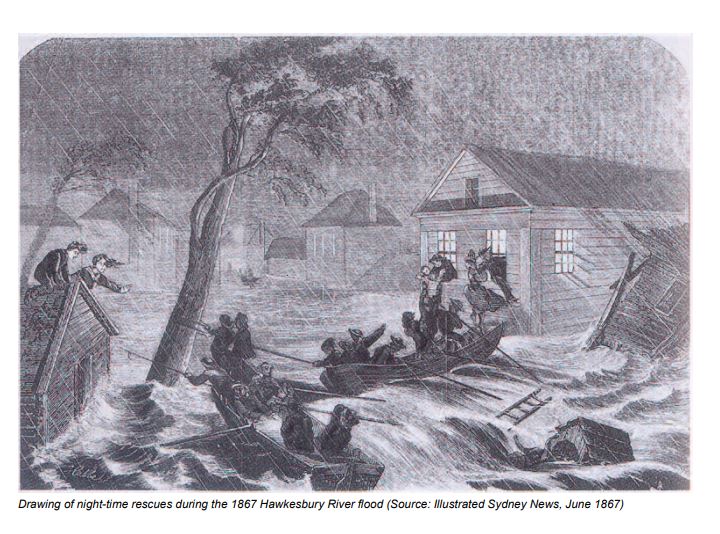 NSW Government 1867 Pdf.
Early days of Windsor by James Steele HawkesburyOn account of distress caused by floods the Governor curtailed the sale of rum during the year 1798. For the first twenty-five or thirty years of the settlement of New South Wales, the Hawkesbury was looked upon as the granary of the colony. When floods came the greatest anxiety was caused in Sydney and Parramatta, and floods were fairly frequent in those days… There was another Government House earlier still, erected at the time of the first settlement in the district. This was reported to have been swept away by flood waters in 1799. On 23rd March, 1806, there was a great flood in the Hawkesbury, which rose ten feet higher than the flood of 1801 and reached to within eighteen inches of Dr. Am dell’s home at “Catty”. The Governor appointed a commission, consisting of Dr. Arndell, Rev. S. Marsden, and Mr. N. Bailey, to visit and report concerning the damage done by this flood, and afford relief where necessary. They reported the loss of wheat, maize, barley, live stock, and buildings valued at £35,248, in addition to the loss of seven lives. Extract from Government and General Order, dated 15th December, 1810:— “The frequent inundations of the rivers Hawkesbury and Nepean having been hitherto attended with the most calamitous effects, with regard to crops growing in their vicinity, and in consequence of most serious injury to the necessary subsistence of the colony, the Governor has deemed it expedient (in order to guard as far as human foresight can extend against the recurrence of such calamities), to erect certain townships in the most contiguous and eligible high grounds in the several districts subjected to those inundations for the purpose of rendering every possible accommodation and security to the settlers whose farms are exposed to the floods. Back then when floods destroyed crops, people starved, but charities saved the day: “The rivers Hawkesbury and Nepean, having inundated the various settlements on their banks three times within nine months, and swept away great quantities of wheat and stock of all kinds, as well as totally destroying the growing crop of maize, which was nearly ripe, a most lamentable scarcity of grain prevailed, and hundreds in the districts of the Hawkesbury were reduced to a state of starvation: and to alleviate these distresses the Magistrates and other gentlemen at Windsor and the surrounding districts raised the sum of five hundred pounds by voluntary subscription, on the 28th June, 1817, which was lain out in the purchase of provisions, chiefly rice, and issued weekly to upwards of five hundred distressed persons, by Mr. Harpur, at the Public Schoolhouse at Windsor, until the harvest commenced, November 23rd, 1817.” From Mr Tebbuts Observatory notes: Highest Floods at Windsor. We give herewith a list of the biggest floods, that is, such as rose thirty-five feet or more. This would be at least fifteen feet over the present Windsor bridge, and would encroach a considerable way up Bridge, Baker, Kable, and Fitzgerald streets on the north side, whilst a forty-eight feet rise would bring the water right across George Street near New Street. Such rises occurred in the years 1864 and 1867. The highest flood recorded was that in 1867, June 23, which rose sixty-three feet. All Windsor was covered excepting two spots; an island about two hundred feet wide, and extending from Johnston Street, near the Gazette office, up to the School of Arts and a little beyond. Another island started near New Street, extending along the Terrace past St. Matthew’s Church, taking in Tebbutt Street and part of McQuade Park, and from the railway station about a mile back along the Penrith Road. Richmond was half under water. An island was formed about the old Clarendon House to near the Roman Catholic Church. Another island started from about the Black Horse Hotel, and extended back through part of “Hobartville” to Yarramundi. Pitt Town was also an island two hundred chains long and the same wide. The whole of the road to Pitt Town and Cattai was under water, except a small portion in Pitt Town. The Parramatta road was under water out to Vineyard. Most of the Riverstone Meat Company’s paddocks were also flooded, and all the low laud away towards Blacktown. The flood measurements in the accompanying list, from 1855 to date, are taken from the meteorological observations of Mr. J. Tebbutt, F.R.A.S., made at his private observatory on the Peninsula, near Windsor, and may, therefore, be accepted as correct. Those given before that date are, we fear, not so accurate, and at times are much exaggerated.
Conversions: 40 feet is 12.2 meters. 45 feet is 13.7m and 50 feet is 15.2 m. 63 feet is 19.3m. ————————————  1869 Floods — Source: Gutenberg ebooks Snippets from flooding in the later half of the 1800s: In the year 1842 a neat brick church was built at Clydesdale and named St. Phillip’s, the parish being from then known as “Windsor and Clydesdale”. Unfortunately, this church was built on the flood area, the big flood in 1867 leaving drift wood on the roof. This church is now closed. …the Big Flood, 23rd June, 1867, when the river rose to the extraordinary height of sixty-three feet, and six lives were lost. The Rev. H.T. Stiles died on the 22nd June, 1867, within two days of his sixtieth birthday. His death occurred while the big flood was at about its greatest height, the water having entered the Presbyterian Church in George Street, where large numbers of refugees had slept the previous night. The last duty performed by the dying minister was to order that the church doors of St. Matthew’s be opened in order to let the homeless people find a shelter from the rising flood. A water brigade was formed in 1872, to be in readiness in case of flood, and to become proficient in the management of the flood boats. The members were Messrs. J. A. Dick, Wm. Moses, R.D.W. Walker, W. Gosper, W.F. Linsley, W. Alderson, and E.J. Tout. THE danger from floods is always a source of anxiety to the occupants of the low-lying lands along the banks of the Hawkesbury; the river may rise and overflow its banks at any time during the whole year. The tragic stories of families lost due to NSW floods is written up in Family Tree Circles. See also History of the Floods of the Hawkesbury (J.P. Josephson), 1795-1881. Why is nuclear power Green today when it wasn’t yesterday? Because it was never about the science.
And the best friend of a bureaucrat is a captive-dependent-industry, one that survives on handouts. Those in need of Big Government largess always lobby for Big Government, donate to Big Government causes and cheer on everything Big Government wants them to cheer on, even if it’s a naked man in high heels. Yesterday gas was a fossil fuel, but today it’s a sustainable one: Gas and Nuclear Power Can Be ‘Green’ Under New EU PlanWall Street Journal Lawmakers in the European Union voted to include nuclear power and natural gas in the bloc’s list of investments deemed sustainable, a move it hopes will trigger more funding of those sectors but that critics said would slow down the EU’s shift to greener energy sources. Just like that — sensible flexibility pops out of the cake: Under the plans, gas can be classed as a sustainable investment if “the same energy capacity cannot be generated with renewable sources” and plans are in place to switch to renewables or “low-carbon gases”. Nuclear power can be called green if a project promises to deal with radioactive waste. Greens are furious, not realizing that it was their work that made the EU an energy basket-case pouring money into Russia: Campaigners are now vowing legal action. WWF said that with its fellow NGO Client Earth it would “explore all potential avenues for further action to stop this greenwashing and protect the credibility of the whole EU taxonomy”. Two anti-nuclear states, Austria and Luxembourg, have already announced they will take the commission to the European court of justice. The Washington Post sees the light that renewables can’t make it without help, but credits The War for their awakening and forgets that Donald Trump and a million skeptics were right all along. Excuses, excuses… The war in Ukraine added new complexities to the debate. The war has made Europe rethink its reliance on Russia, particularly when it comes to fossil fuels, and has amplified calls for an accelerated energy transition. And they amplified what exactly — an energy transition to gas and nukes?) Simon Campbell speaks at the Pennsbury School Board meeting serves it up to the Board President he calls “Mussolini”. (h/t commenter Lance for details)
From the Supreme Court case of New York Times versus Sullivan, 1964 US constitutional case law says: This nation is founded on the profound national principle that debate on public issues shall be uninhibited, robust, and wide open and it may include vehement, caustic, and sometimes unpleasantly sharp attacks on Government and public officials. Watch the video, not just for the content but for the force with which he delivers it. He will not be deterred, bullied or silenced. He wades right through the intimidation. He knows what his rights are, he has come prepared, and he will not submit. Most of the snowflake generation need to hear this quote to counter the false power of the cancel culture bullies who cry injury — racism, sexism, and hurty-pronounism. Free Speech may offend people, especially public officials. h/t Also to Tom Nelson Don’t wait for your government Newspeak channel to tell youOn Twitter #Netherlands, massive protests are underway. Farmers have been told to shut farms to reduce nitrogen emissions and they’ve taken to the streets. (It’s not clear if this is purely about fertilizer runoff, or climate change as well.) The word is that supermarket shelves are emptying fast, roads are blocked, but that 75% of the public generally support the farmers and are joining in on foot in some places. Farmers are dumping hay bales in the streets and spraying manure on government offices. There are claims (with footage) that the Dutch government has brought in armored vehicles and is using tear gas. Some video allegedly shows masked police zero in on single peaceful protestors and pull them out. Express.UK Now ANOTHER crisis hits EU! Hundreds of tractors block the German/Netherlands borderFARMERS in the Netherlands have staged a huge protest with thousands of tractors lining up to block the German/Netherlands border in campaign against the government’s controversial nitrogen policy. Protestors demonstrated in front of several public buildings with manure and slurry after politicians voted on proposals to slash emissions of damaging pollutants, a plan which could force farmers to cut their livestock herds or stop working altogether. Prime Minister Mark Rutte’s Government says the emissions of nitrogen oxide and ammonia, which livestock produce, must be drastically cut back close to nature areas, which are part of a network of protected habitats for endangered plants and wildlife stretching across the EU. Dutch farmers turned out in their thousands to speak out against the World Economic Forum (WEF) climate change policies of their government.
There’s a food crisis brewing, but you wouldn’t know it with the way the European bureaucracy is behaving. Dutch farmers – who sit as the second-largest agricultural exporter in the world and largest meat exporter in Europe – have brought the Netherlands to a standstill, protesting against Climate Change regulations. The newly elected government has set up a 55-60 per cent emissions goal by 2030, 70 per cent by 2035, and 80 per cent at 2040. To meet these arbitrary climate targets, they have created a self-inflicted disaster that will see the government drag its agricultural sector up the temple stairs, tear it to bits, and let whatever bloody stumps are left to tumble down the steps for the pleasure of the United Nations climate gods. Farms which have been feeding the world for hundreds of years are going to be unceremoniously shut and their owners ruined because a couple of bureaucrats decided they didn’t like the nitrogen and ammonia emissions produced by growing food. The press have attempted to demonise farmers for defying the EU’s virtuous green push – but the Dutch people aren’t listening, with support for farmers still over 75 per cent.  ….
h/t Tonyb, another Ian.
It’s where a scientific quagmire marries an economic fairy. Instead of salvation we get the swamp to end all swamps. It doesn’t give power to the people or produce an honest mode of exchange or stop the storms either. A carbon currency just feeds corruption and centralized unaccountable unelected committees who play power-brokers and Kingmakers, deciding what is and what isn’t a real “right” and who or what should pay. It serves global bankers who broker the transactions. It is the paper currency from hell. Where do we start? A bar of carbon “rights” is not a bar of goldHow do we weigh a “carbon right”? Every nation on Earth knows what a gram of gold is, and with 2,500 years of trading history, everyone knows that come the apocalypse, they can still swap gold for goods. What sort of security is backed by the right to emit one unit of carbon dioxide, a right that all life on Earth and most of the rocks and water already has? The largest consumer of carbon rights is the Pacific Ocean on a warm day. Should we set up an account for it in Geneva? Do the territorial seas around a nation produce or consume carbon rights? What about the coral reefs, the trees, the bark, the bacteria? Says who? We cannot measure it, so it’s all modeling. May the biggest cheats win and UN Gatekeepers rule the world. The problem with using a ubiquitous molecule as an exchange of value is manifold — either every molecule is in the market or the new Global Emperor decides what is and what isn’t and everyone bows, grovels or bribes Zir or Zat Ruler to get what they want. There’s no intrinsic way to know if the molecules being counted are “in” the market or out; the biggest players in the market can’t play, and perverse incentives are everywhere like spaghetti. A global carbon currency would be instantly prone to massive rorting, corruption, and political whimsy. Are all carbon rights equal, and if not, who decides?Does a freezing Inuit have the same right to emit carbon as someone living in the tropics? Do countries with high population growth earn more rights to emit? Would that incentivize baby-production in a world where some argue that more people means more pollution? Or do we go the other route, where humans don’t count per se, but it’s the right of a nation compared to past emissions, which disincentivizes and punishes nations that grow their population or allow mass immigration. Should we rate the “right” based on distance from global population centers, population density, latitude, rating for “development” proclaimed by some quasimodo UN Index, rorted up the kazoo by nations that earn votes via Belt-N-Road bribes or leverage, or should we just auction the rights to the biggest bribers? What could possibly go wrong? And whose is this magical “we” who decides? Gold, on the other hand, is the ultimate anti-cheating deviceGovernments can’t print it, fake it, change the definition of it, or argue over whether it exists. Logically, without gold backing, our paper currencies are simply legalized counterfeiting. Any global fiat carbon market would be only as secure as its weakest link — think Zimbabwe. At least some paper currencies are backed by the tax-raising power of democracies, which slows the descent of paper currencies to their true long-term value — zero. (Look up MMT). Make no mistake — the Carbon market is a fiat currency, not a commodityDespite the name sounding exactly like an element of the periodic table, the carbon market isn’t counting carbon, or even carbon dioxide. It’s merely some fractional subpart, a few percent thereof, as defined by a committee of bureaucrats who would control billions of dollars on a whim — and be bought for mere millions or promises of a glorious golden ambassadorships to New York or Beijing. The carbon market wouldn’t just invite loopholes, it would be one. Real CO2 makes the world go round, produced or consumed by every living thing on Earth. It’s only a small player in the global climate controller — vastly outdone by the Sun, by clouds, ocean cycles and who knows what. Carbon (as CO2) is the only “commodity” on Earth that no human can tell whether the container ship is full or empty. Is that certificate real? Will that CO2 stayed stored in the trees or under the sea? Sure, if you say so, but I need a cut of what you’re getting or I will go public… There are major obstacles to enter the marketIn an efficient market, there should be no obstacle to entry or exit. Yet the largest players in a global carbon market can’t play because they have no brain. Which of these sources or sinks do nations own with sovereign control, and which do they not? The UN power-games over the definition of the parts of nature that could be included will be the International Monetary Bunfight of the Century, and it will never end. We are carbon life forms. Shall we charge fat people more for their right to breathe? Well, obviously. Is that a market managed by God I see?What happens when a fire wipes out a forest? Was that an Act of God, or arson, or just an investment? Was it warfare? Foreign actors might find all kinds of ways to destroy a national account. Currency management might be a cigarette butt thrown out a window on a summer’s day. In another country — that sounds like a job for the CIA. The efficient market hypothesis suggests buyers and sellers act on all available information. But when humans make only 4% of total global emissions, and 96% of this market is controlled by the Sun, or phytoplankton, or cosmic rays, who the heck knows? Perverse incentives are everywhereIn Australia the Kyoto agreement probably led to the theft of farmland from farmers. Coincidentally, all Australian states brought in legislation to protect native regrowth (often also known as weeds). Suddenly farmers that didn’t clear every year couldn’t clear at all. The new “carbon” was credited towards our national Kyoto commitment, as measured by satellite cameras with no compensation for farmers. Thus the perverse incentive was to stop farmers from allowing regrowth, or to steal the farm accidentally off them if they made the mistake of allowing trees to fill paddocks. (Read the sorry saga of Peter Spencer, who lost his life’s work through no fault of his own). Most past carbon markets ended up including credits for atmospheric nullities that may or may not have been real, and are always unknowable. Was the forest saved from being razed? Would you have built that hydro dam anyway? Does that carbon credit really exist — was that factory closed, purely to claim the credits, or did it create more pollution in the first place so it could earn more from being closed than it did while running? These environmental frauds have already happened — see HFC-23 and ask President Xi. And then there is the awful state of carbon accounting. In 2015 the world found 2.6 trillion undiscovered trees. Despite satellites, 83% of the Earth’s trees were not counted nor known. Suddenly, the whole world owed carbon credits to the rest of the world. It’s a bad joke. Every year new carbon account “oopsies” turn up. Lakes one year, microbes the next. As soon as there is money in carbon accounting, the grants to discover carbon will bloom and flow. The market will shake every year and for decades to come as the dollar gets furiously revalued with a thousand new peer-reviewed papers. Let’s have a free market in science before we mandate an un-Free market in carbonWe need to understand the science before we can even start thinking about the market. The abject endless climate model failure, and the scientific sickness underlying the core value of “a unit of emissions” neutralizes the entire economic argument. We can’t predict what CO2 will do to the climate a year from now, but we do know that carbon emissions increase crop growth, help arid zone plants grow, and green the world. Is that not beneficial? Who should pay who? Cold countries benefit from warming. Twenty times as many people die in the cold than die in the heat. Nothing kills as many people as moderate cold. Global warming saves 166,000 lives a year. Based on the only scientific facts we are sure of, carbon feeds the masses, helps the poor, and saves lives. Reducing carbon will kill people. Who will pay for that? A theory of carbon currencyAbstract We propose a new international monetary system based on carbon currency (the carbon standard) to tackle two pressing externalities in today’s global economic and political context: the dangerous and irreversible effects caused by unconstrained green-house gas emissions and the cost to the rest of the world as a result of the U.S. dollar being the dominated global currency and the U.S. Federal Reserve increasingly implementing monetary policies not aligned with the global common interest. We define carbon currency as standardized carbon-related securities backed up by the right of one unit of carbon emissions. It can be used as a new global reserve currency and functions as an international unit of account. Through the trading of carbon currency, efficient carbon prices are established. By incorporating the cost of carbon emissions into decision making, carbon pricing provides incentives for countries to pursue low-carbon growth, which helps achieve the net zero emissions global goal set under the 2015 Paris Agreement. Under the carbon standard, the external shocks to the international financial system would come from variations of carbon emissions rather than the U.S. monetary policies. As such, monetary authorities’ commitment to maintaining stable exchange rates comes together with monetary policies aiming at pursuing low-carbon growth. The new system potentially poses a plausible solution to the classical Mundellian Trilemma because the objectives of maintaining fixed exchange rate and implementing monetary policy become one. Although several hurdles are constraining the launch of carbon currency immediately, the carbon standard poses a feasible international monetary system as the world-wide campaign to achieve carbon neutrality progresses.
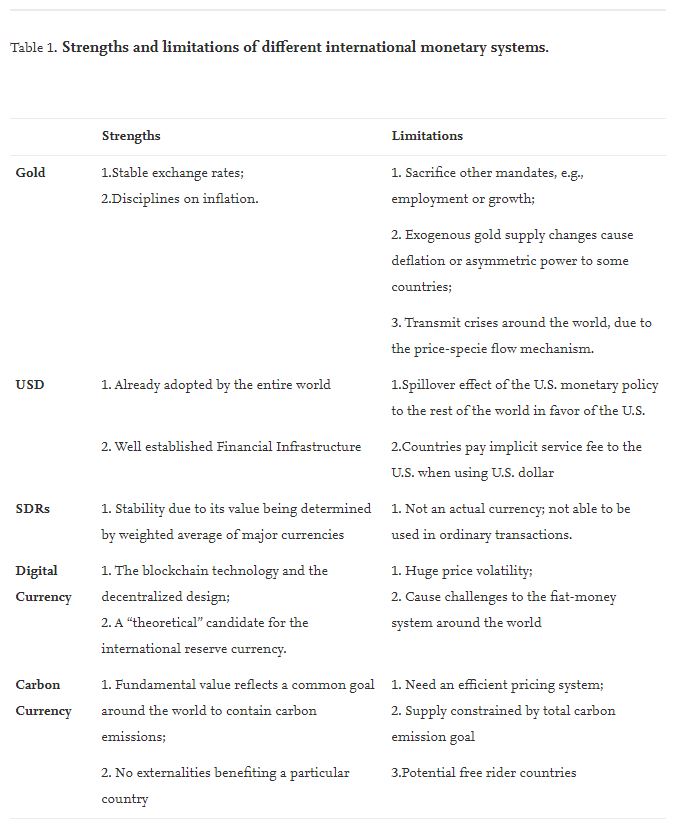 ….
Let’s use a medium of exchange which is not meant to be a medium of exchange, it’s “meant” to control the weather? 3.4. Other benefits: carbon currency as a medium of exchange and a store of valueAs discussed earlier, we do not emphasize much the function of carbon currency as a medium of exchange because it is not the main motivation of introducing carbon currency into the international monetary system. As invoicing currency have been shown to be important, we argue that carbon currency could also be used in international trade. The current trade system has U.S. dollar as the dominant invoicing currency, and both theoretical and empirical studies [2] have shown that an appreciation of U.S. dollar would lead the trade volume of the rest of the world to decline. And by definition the appreciation of the carbon credit “dollar” would lead to a trade volume decline in every nation on Earth. Carbon dioxide emissions are linked to GDP. The more nations emit, the richer they are. 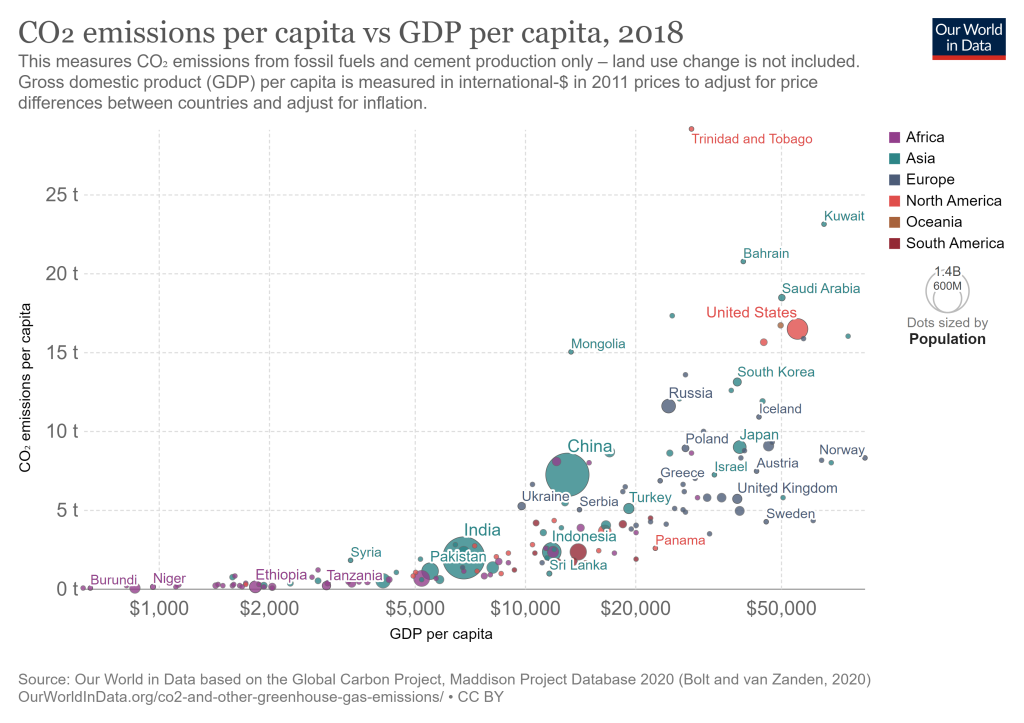 OWID |
Nothing about a carbon currency makes sense except to global bankers and bureaucrats. Certain parties are going to grow rich and powerful by using a carbon currency, but they don’t include us. h/t Willie Soon and Joe Bast at Heartland REFERENCE Liu et al (2022) A theory of carbon currency, https://doi.org/10.1016/j.fmre.2022.02.007 https://www.sciencedirect.com/science/article/pii/S2667325822001182 Given the advantage of controlling essential strategic resources, China would be crazy if they weren’t: Pro-China group running online campaign against US rare-earths industry, says cybersecurity firmRaghav Bikhchandani, ThePrint A report released Tuesday by Mandiant says a pro-China group named Dragonbridge has been using “nuanced tactics” against firms like Lynas, Appia, and USA Rare Earth. These included posing as local residents online to drum up protests against the construction of a Lynas rare-earths processing facility in Texas. The facility’s development is the result of an agreement signed between the US Department of Defense and Lynas to boost America’s rare-earths domestic industry. “The accounts claimed that by placing the Lynas plant in Texas, the Biden administration would expose the area to irreversible environmental damage and the local population to radioactive contamination and adverse health effects such as cancer risks, gene mutation, and deformities in newborns,” the Mandiant report said. ‘Tactics to manipulate public discourse’Elaborating on its claims, Mandiant also shared several screenshots of purported sockpuppet Twitter and Facebook accounts dating from April and May that called for a boycott and shared concerns over Lynas and its rare-earths plant. Mandiant also found other “newly identified” social media accounts that were criticising Appia and USA Rare Earth, and which posted memes or links that were “known Dragonbridge content”. “Many of the usernames consisted of English-language names followed by seemingly random numeric strings.” SecuritySolutions“The private sector is now the victim of attacks by Chinese information operations which is growing increasingly aggressive,” John Hultquist, the Vice President of Mandiant Intelligence said. ” Information operations are typically a problem for civil society, governments, and platforms. They rarely target the private sector so directly and aggressively. This is a well-resourced campaign that’s grown significantly in size and scope compared to its recent activity in Ukraine.” Among the Australian companies hit was ASX-listed Lynas Rare Earths Ltd, the world’s largest rare earths mining and processing company. The effect of these particular protests doesn’t appear to be significant yet, but it suggests that China places great importance on controlling the supply of rare earths, that it doesn’t play fair, and that it’s quite likely that this goes on in other industries and public debates. The US Dept of Defence has acknowledged the disinformation campaign and appreciates the diligence of Mandiant. So how much of this goes on in the Climate debate? h/t NetZero
More strange puzzling numbers coming out of life insuranceDeaths per capita are usually tightly predictable, but it appears something serious is going on in terms of unexplained excess deaths in people aged from 18 to 64. These are people in the prime-of-their lives. If Departments of Heath and Professors of Medicine were working for taxpayers, we surely wouldn’t be trying to guesstimate how many people have died from looking at insurance company payments. But here we are. Someone official has all the morbidity and mortality data. Someone knows. In January we heard that the chief of OneAmerica Life Insurance was astonished that there was an “unheard” of rise in deaths in working adults of ages 18 – 64 in the last two quarters of 2021. Deaths in this working age group were up by an amazing 40% above the historical norms. “We are seeing, right now, the highest death rates we have seen in the history of this business – not just at OneAmerica,” the company’s CEO Scott Davison said during an online news conference… “The data is consistent across every player in that business.” “Just to give you an idea of how bad that is, a three-sigma or a one-in-200-year catastrophe would be 10% increase over pre-pandemic,” he said. “So 40% is just unheard of.” These extra deaths did not seem to be from people who died of Covid but were untested. It was unlikely they were unrecognised Covid cases. Official case counts of Covid were lower than the year before, and test positivity was down too. The timing of the mysterious excess deaths fitted better with a widespread experimental medical program that was rolled out en masse in the last two quarters of 2021. There has been little news since then, which is probably not surprising given the high stakes, intense media un-interest, and also that it’s probably not something the insurance companies want to share widely, since it could affect earnings. Which is exactly the next point. If there was a sudden rise in excess deaths we would expect to see it in insurance companies financial reporting. Which appears to be happening in reporting from Lincoln National — the fifth largest life insurance company in America. Indeed their numbers may be worse than the ones discussed in January. Crossroads report by Margaret MengeFifth largest life insurance company in the US paid out 163% more in death benefitsLincoln National, reported a 163% increase in death benefits paid out under its group life insurance policies in 2021. This is according to the annual statements filed with state insurance departments — statements that were provided exclusively to Crossroads Report in response to public records requests. The annual statements for Lincoln National Life Insurance Company show that the company paid out in death benefits under group life insurance polices a little over $500 million in 2019, about $548 million in 2020, and a stunning $1.4 billion in 2021. It’s not clear how many extra deaths there were, this is just the payouts. Crossroads do some average estimates of normal payouts of around one year’s salary and guesstimate that Lincoln National paid out for around 20,000 deaths in the 18 -64 age group, which is about twice as many deaths as normal. There have been a million deaths ascribed to Covid in the US during the pandemic and there are normally three million deaths a year, so these numbers may not look that large, but if healthy working age people are dying 30% more often or 100% more often, then something dreadful is going on. Payouts for individual life policies were up 30%The statements for the three years also show a sizable increase in ordinary death benefits — those not paid out under group policies, but under individual life insurance policies. In 2019, the baseline year, that number was $3.7 billion. In 2020, the year of the Covid-19 pandemic, it went up to $4 billion, but in 2021, the year in which the vaccine was administered to almost 260 million Americans, it went up to $5.3 billion. Increases show up in other company reports but may not be as bad as Lincoln. Annual statements for other insurance companies are still being compiled and reviewed. So far, Lincoln National shows the sharpest increases in death benefits paid out in 2021, though Prudential and Northwestern Mutual also show significant increases — increases much larger in 2021 than in 2020, indicating that the cure was worse than the disease — much worse. Shares in Lincoln National are down 3.6% in the month since the earnings report was released. h/t David Archibald The SEC has a copy of the May 4th Press Release. SEC Lincoln National Financial Group First Quarter 2022 Results Keep reading → This is Fall of Rome type stuff — everything is coming undone
The immediate cause is strikes for wage claims and terrible maintenance leading to major power outages lasting as long as nine hours. But Green targets and activism only makes it worse because there’s no interest in maintaining plants properly which are planned for closure. South Africa runs mostly on old coal plants, and one of the largest plants is closing (supposedly) as soon as September. And the wind and solar power they have often isn’t helping with the peak loads either. There is vandalism from every direction. At the bottom end, apparently up to half the people in Soweto are not even paying for electricity — maybe because they don’t have jobs — but they jerry-rig connections to bypass the meters, and the illegal tampering causes more problems. The rolling blackouts cause some breakages and explosions as power comes back on. People who are connected may not pay their bills. Thieves are stealing copper wires, and the blackouts only make it easier for them because they don’t have to worry about being electrocuted. Eskom has also been hit with major corruption scandals. Some during the Zuma era, led to delays in completing new power plants. Then there is the Chinese Belt and Road program too: In 2018 Eskom took a secretive 33b Rand debt from the Chinese Government (worth about $2b USD). There was word of another 25b Rand debt to China too, which apparently won’t be repaid “due to irregularities and corruption” involved in issuing it. At the top end of town, the globalists are trying to force an expensive fashionable green transition on a country that can’t afford it. South Africa’s Integrated Resource Plan of 2019 – seeks to expand the share of renewables in the energy mix to 25% by 2030. The UK has offered a billion dollar loan for the transition to unreliable power when what South Africa really needs at the moment is dependable cheap energy.
Ominously, Eskom has apparently already lost 6GW of demand in the last year “…because many non-paying customers have been disconnected and several large clients, among them industrial users like mines, are now generating their own power.” So much for the efficiency of mass production eh? It’s every mine for itself, diesel gens to the left, and higher prices to the right… And so much for poor consumers cooking by candlelight. The first power stations were built in South Africa in the 1920s but now, here we are 100 years later and wondering if South Africa can maintain them? Eskom is the state power utility which generates over 90% of the country’s electricity which is roughly a 20GW-30GW daily operation. In theory it has 44GW of generation but 2,766 megawatts is offline due to planned maintenance, and another 17,395 megawatts is out due to breakdowns. There are about 6GW of unreliable renewables. Apparently as many as 90% of employees at three power stations had not returned to their posts on Friday, making it difficult to fix anything that is broken. Experts say this will take years to fix. Economists at the Bureau of Economic Research predict the load shedding to continue for at least three years. It’s all rather sad to see for our South African friends, and a rather sobering message of just how many things have to go right to run a modern civilization. A bit of corruption here, a few bad decisions there, a bit of pressure from foreigners, rinse, repeat and recycle and before you know it, a perfectly good civilization is going to waste. Just as in Australia the demand for electricity peaks at dinner time and wind and solar are more useful at nearly every other hour. The Integrated plan to add 18GW of wind and 8GW of solar won’t solve anything. 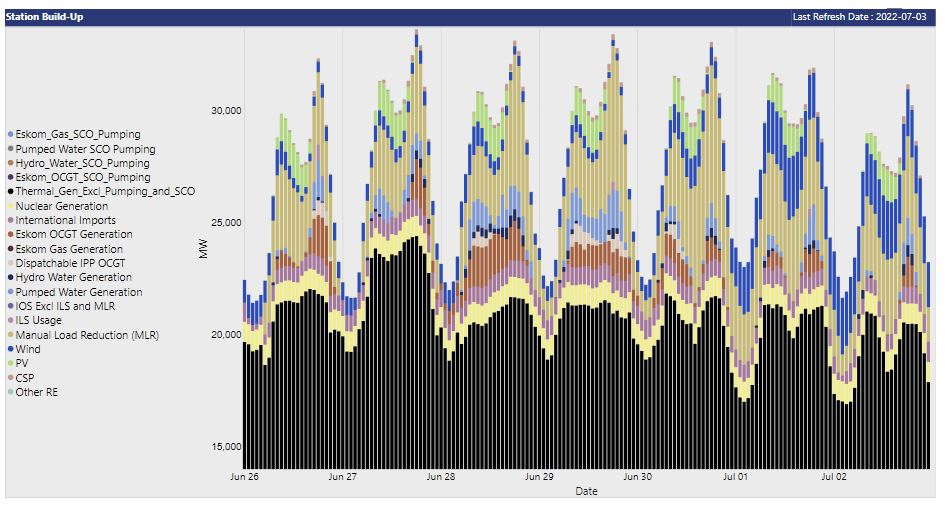 See the original at Eskom | Click to enlarge | Coal is called “thermal” (the black color here). Why the lights are going out again in South AfricaThe Economist Forget the weather forecast. South Africans these days are more interested in the outlook for rolling blackouts. One of the country’s most-downloaded apps provides alerts and schedules for power outages. Eskom, the state power monopoly, cannot generate enough electricity to meet demand, and is deploying a byzantine system of rotating outages known as “load-shedding”, so as to avoid the collapse of the entire grid. Last year saw the most blackouts in South African history, overtaking 2020; and this year is set to beat the record again. On June 28th, for only the second time, “stage 6” load-shedding was implemented, which would mean several outages over a 24-hour period. Many businesses have bought generators or solar-power systems; others close during outages. In big cities, there is chaos at rush hour as traffic lights go dark. The blackouts suit copper-cable thieves, who can steal without fear of electrocution. And when the electricity is switched back on, substations sometimes explode, resulting in secondary outages. Pandemonium: Corruption is so bad that Eskom claims 50% of customers in Soweto are illegally connected to the grid and paying nothing. Qithi said Eskom was dealing with an exponentially high number of failed mini-substations and transformers in Soweto. This was due to the network becoming overloaded due to illegal connections; meter bypasses and tampering; unauthorised operations on the electricity network; vandalism and theft of electrical equipment; purchasing electricity tokens from ghost vendors; and non-payment of electricity, Qithi said. “In most areas where customers are experiencing prolonged outages relating to failed or exploded electricity infrastructure, this is due to their resistance to the repair or replacement process.” Qithi said in some instances communities would violently chase Eskom technicians from areas when they attempted to implement the replacement process as part of their operations. A total System Blackout is possible: Beyond Stage 8? Expert says SA ‘one step away’ from TOTAL blackoutWe wonder how many other countries feel like they are being held to ransom by their national electricity provider? The situation at Eskom remains dire, after the utility plunged SA into Stage 6 load shedding on Tuesday. However, one senior expert now thinks a ‘total blackout’ is coming. Sampson Mamphweli spoke to eNCA about the matter….“It’s not looking good. The strike has come at the worst possible time. If you look at our coal fleet, it is not performing how it should. We are moving towards a total blackout. Essentially, Stage 6 is one step away from total blackout.” “Once we get to that level, it’s going to be very difficult for us to reawaken the entire system we are sitting in a difficult situation as things stand. I feel sorry for the current leadership, because they are grappling with historic negligence.” The Green international push is on, though workers at the coal plants call talk of a just energy transition is “a big ruse.”Anxiety and confusion over energy transitionAs of September, 2022 Komati power station – one of South Africa’s oldest coal fired-power plants – is due for decommissioning as the first major milestone towards Eskom’s energy transition plans. Born from agreements at an international level which recognise the urgency of mitigating the drivers of climate change, South Africa has set course to shift to a low-carbon economy. However, for workers in Komati, talk of a just energy transition is a big ruse. What is actually at play is a neoliberal structural adjustment pacified by rhetoric of a green agenda. With weeks to go until plant closure at the Komati coal-fired power plant in September, 2022 workers lament that they are yet to be consulted about Eskom’s transitional plans. This has emerged through workshops held with workers by the Institute for Economic Justice in collaboration with the NUM Komati branch. See also: UK Weighs $1 Billion Guarantee for S. Africa Shift From Coal and South Africa to expand clean energy capacity to meet demand. An engineering nightmare of rushed emergency temporary repairs
|
||||
|
Copyright © 2024 JoNova - All Rights Reserved |
||||

 Remember Stuart Kirk, head of “responsible” investing at HSBC who was suspended when he pointed out that climate risks were distant, irrelevant hyperbole? This was at once shocking impermissible and the bleeding obvious. He also dropped the bombshell that the central banker models of climate risks buried massive GDP shocks and interest rate rises so they could find the economic disasters they were looking for.
Remember Stuart Kirk, head of “responsible” investing at HSBC who was suspended when he pointed out that climate risks were distant, irrelevant hyperbole? This was at once shocking impermissible and the bleeding obvious. He also dropped the bombshell that the central banker models of climate risks buried massive GDP shocks and interest rate rises so they could find the economic disasters they were looking for. Germany is rationing hot water, dimming its street lights and shutting down swimming pools as the impact of its energy crunch begins to spread from industry to offices, leisure centres and homes.
Germany is rationing hot water, dimming its street lights and shutting down swimming pools as the impact of its energy crunch begins to spread from industry to offices, leisure centres and homes. We are talking about millions, if not 10 million people moving into real poverty this winter, the worst winter we have seen’. Martin Lewis today warned that the UK is facing a ‘cataclysmic’ energy crisis this winter as the price cap is set to reach £3,000.
We are talking about millions, if not 10 million people moving into real poverty this winter, the worst winter we have seen’. Martin Lewis today warned that the UK is facing a ‘cataclysmic’ energy crisis this winter as the price cap is set to reach £3,000.

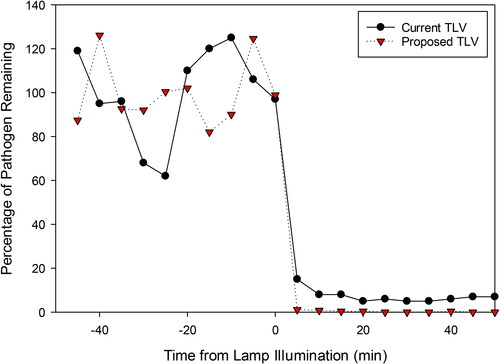

 Nuclear power has been the NetZeroiest energy on Earth since the sun formed from collapsing interstellar gas. Nuclear plants don’t produce any CO2 at all, but that wasn’t good enough because it was never about CO2 either. It was always about power and money and profits for friends.
Nuclear power has been the NetZeroiest energy on Earth since the sun formed from collapsing interstellar gas. Nuclear plants don’t produce any CO2 at all, but that wasn’t good enough because it was never about CO2 either. It was always about power and money and profits for friends.
 The idea that we could make “a carbon credit” work as an international currency and fix our weather at the same time, is the stuff of Econo-alchemy.
The idea that we could make “a carbon credit” work as an international currency and fix our weather at the same time, is the stuff of Econo-alchemy.

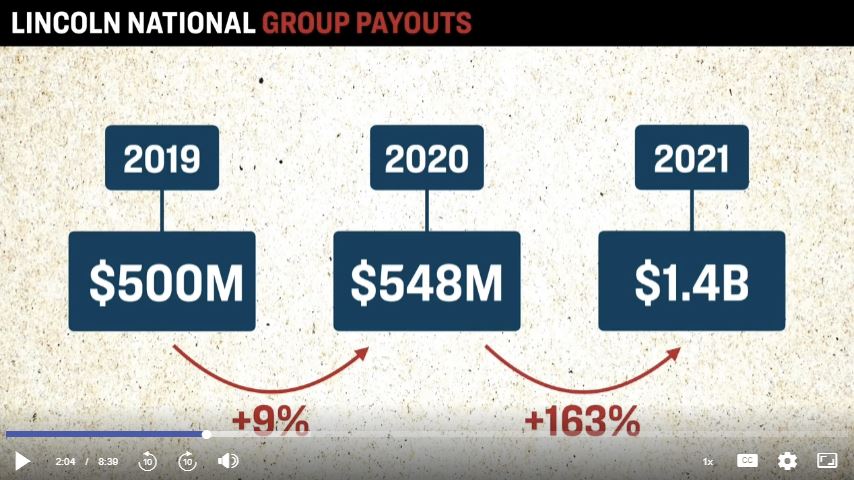

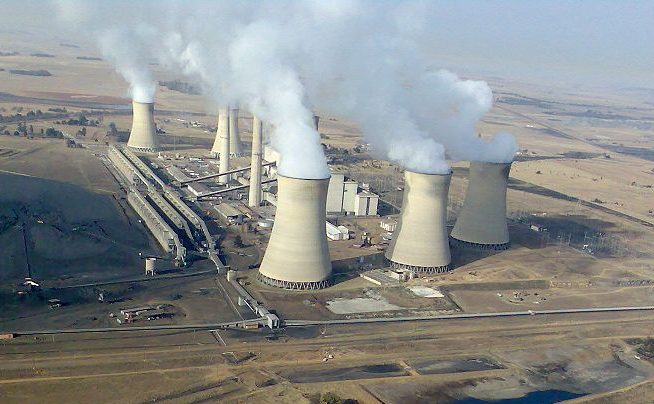




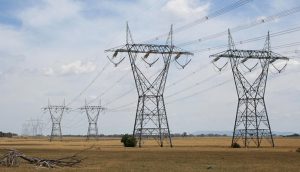
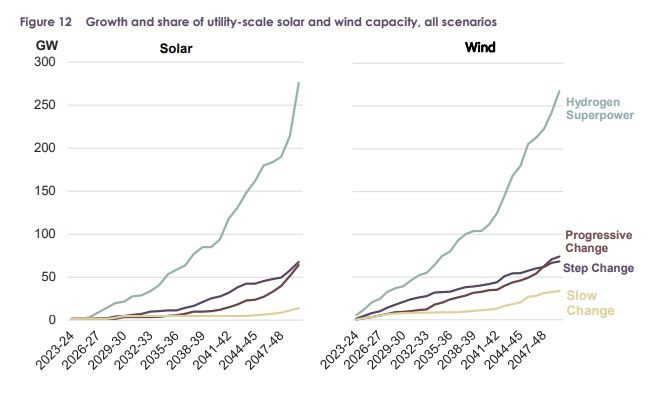
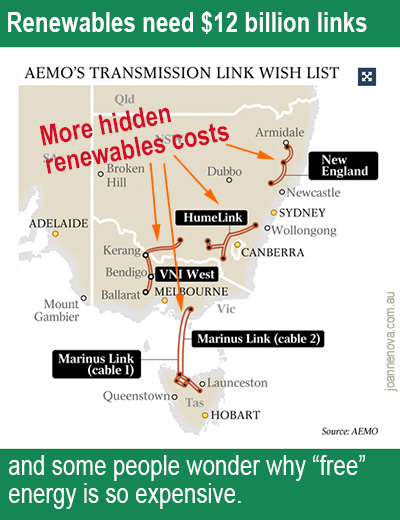











Recent Comments